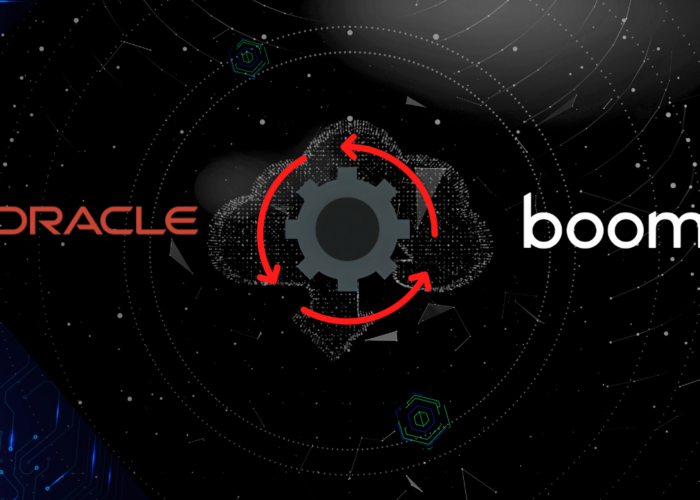There’s a lot of behind-the-scenes effort that goes into installing an ERP system as part of your company’s existing IT infrastructure. In some cases, businesses may also prefer to remodel their old ERP software to meet your current needs. To derive the full range of benefits from an ERP system, it’s important to map your ERP integrations in detail—understanding how the technology connects with other applications, data sources, and external systems to generate harmonious digital interactions. In this article, we will explore the key aspects of ERPs, from the step-by-step process of its implementation to choosing the right fit for your organisation. Moreover, we will illustrate how three ERP providers are dominating the market: SAP, Oracle, and Microsoft. Let’s dive in!
|
Selecting the right technology: 3 ERPs that are dominating the market
While there are a plethora of ERP technologies available, each with its own set of unique features, target audience, and deal use cases, this article will focus on three of the biggest names around:
Microsoft Dynamics 365
If your IT ecosystem is predominantly Microsoft-based products, procuring the ERP technology may ensure uniformity between your systems. Dynamics 365 seamlessly integrates with other Microsoft products like Office 365, SharePoint, and Outlook. Its flexibility of deployment (both in cloud and on-premises) and broader target audience (it is preferred by small, medium, and large enterprises looking to modernise their business operations and face industry-specific challenges head-on) make it an amazing choice of ERP. Furthermore, it has great reporting capabilities
SAP ERP
SAP is a well-established technology with a long history in the ERP realm. While its user interface may be less intuitive than the other options, it provides templates that are tailor-made for specific industries. It is particularly well-suited for large enterprises with more complex needs across various functional areas like HR, supply chain, and finances.
Would you like to integrate SAP into your organisation? Visit our page on our SAP initiatives and get in touch with us if this is what you are looking for.
Oracle ERP Cloud
Oracle’s other ERP offering, NetSuite, is known as a user-friendly, purely cloud-hosted solution aimed at medium to small businesses. On the other hand, Oracle ERP Cloud is known for being used by larger enterprises. It can also exist both on-premises and in the cloud. Oracle ERP Cloud offers a more holistic feature set that can be customised for various industries and sectors.
Selecting the right ERP integration approach
When it comes to ERP integration, selecting an approach that guarantees successful implementation holds significance. Key integration approaches include:
- Point-to-point Integration: Point-to-point integration connects individual systems directly to each other. Although it is effective for integrating a few systems, as the number of connections increases, it becomes difficult to maintain.
- Middleware Integration: As an intermediary layer between various systems, Middleware enables seamless communication and data exchange. This integration approach delivers a more scalable and manageable method for integrating ERPs.
- API-based Integration: Application Programming Interfaces (APIs) streamlines data exchange between ERP systems and other applications. API-based integrations offer flexibility by allowing business to effortlessly incorporate or modify integrations.
ERP modernisation
Sometimes, your company may already have an ERP system in place. In this case, improving or optimising your existing ERP systems may be the way to go. This could be anything from changing deployment methods (switching from on-premises software to cloud-based solutions), changing over to more user-friendly interfaces, or enriching your ERP’s features by introducing technologies like artificial intelligence and automation.
Modernising ERP systems offers several advantages:
- Improved Performance: modernising your ERP systems can allow them to process larger volumes of data no matter how complex the requirement. This leads to increased agility in the ERP’s performances.
- User Experience: by modifying the ERP system’s interface to fit current standards, you can improve the usability of the software for your employees and guide them towards using the tool more fruitfully.
- Real-time Analytics: a modern ERP facilitates the tracking of real-time data insights, which enables companies to stay on top of their game by making decisions rooted in proven data patterns.
iPaaS technologies like Boomi, Workato and so on can be used to modernise ERPs such as SAP. These technologies are particularly good at addressing key areas like cloud migration, data stewardship, AI analytics, total cost of ownership (TCO), and so on. These technologies are application agnostic and take data integrity seriously. Therefore, they connect ERPs with all sorts of applications as well as other ERPs without disrupting the organisation of critical business data.
Steps to build your ERP integrations
Successfully introducing an ERP into your organisation requires a systematic approach. Here are a few simple steps to begin your ERP integration journey:
1. Assessment and planning
Identify the distinct business processes and systems that require integration. Develop a detailed plan that encompasses integration, objectives, timelines and resource requirements.
2. Selecting the Integration Technology
Choose the integration approach that best accommodates your requirements, financial plan, and the existing IT landscape.
3. Data Mapping and Preparation
Execute data field mapping between ERP systems and other applications. Clean and configure the data to secure seamless integration.
4. Development and Testing
Develop the integration solution and assess it through rigorous testing to identify and address any issues prior to going live.
5. Deployment and Monitoring
Implement the integration solution and closely monitor its performance to guarantee seamless functioning and rapid response of any potential issues.
5 Benefits of ERP integrations
ERP systems result in many benefits, particularly when it comes to improvements in how data is stored and accessed without manual intervention. Let’s take a look at five of these benefits in more detail:
Streamlining business operations
ERP integrations streamline workflows and increase productivity throughout the organisation. Instead of being burdened by time-consuming administrative tasks, your employees can leverage their talents towards adding value to the strategic direction of your business.
Data accuracy and consistency
Ensuring good flow of data between unrelated systems across various departments—like those handling finance, sales, marketing, and customer relationships—also ensures that data is consistent throughout your company. An ERP functions as a medium of unification for all the different data passing through it. It helps reduce errors and duplicate entries, allowing users to access data that’s recently updated and accurately reflects current organisational needs.
Better visualisation and reporting
ERPs allow you to develop advanced reporting and analytics practices within your company. Some ERP systems have built-in reporting capabilities that offer real-time insights on your data across all functions, departments, and areas of concern. You can create interactive dashboards that illustrate data trends across aspects of your business like sales, finance, inventory, and so on.
Scalability and flexibility
ERP systems and integrations can be expanded or shrunk according to the evolving business environment. New users, processes, and data can all be updated into the ERP without marked periods of downtime. Thus, customer onboarding and offboarding becomes hassle-free, resulting in improved customer experience and satisfaction.
Better decision-making
By utilising the ERP’s potential for comprehensive data exchange, senior management can make swift decisions that correspond to market changes. This ultimately leads to cost savings through increased efficiency and reduced manual repetition of business processes.
ERP integrations: Best practices
Since an ERP acts as a reservoir for highly confidential and valuable business data, it’s necessary for companies to take certain measures before they can include the system into their daily operations. We’ve listed three of them below:
Contribute to data cleanliness before ERP implementation
Although ERPs also promote data cleanliness, tidying up your data beforehand can further enhance the reliability of ERP systems immediately after the integration. Having this strong foundation of data can aid a smooth integration process, leaving little room for errors.
Keep your employees informed and manage change
An organisation must notify employees on the changes an ERP system will bring to the data handling pipeline. You may need to train employees on how to adjust to the new software.
Prioritise security
While a company is experiencing the transition period of welcoming ERP integrations into its digital landscape, it’s critical to maintain the safety and stability of your systems. Implementing Role-Based Access Control (RBAC) to identify unauthorised data breaches, conducting regular evaluations of security gaps, and utilising industry-specific and globally-standardised encryption protocols are some of the steps you can take to ensure the security of your ERP integrations.
Conclusion
Enterprise resource planning solutions can contribute to a steep rise in organisation-wide productivity. As industries adapt to changing standards and goals, it is important for your ERP system (along with the rest of your IT capability) to keep up. While selecting the right ERP software or vendor for your individual requirements is definitely a crucial step, focusing on your ERP integrations should be at the core of your solution. This could involve crafting a brand-new ERP integration strategy or modernising your existing ERP integrations and platform. Whatever your decision, you can drive different facets of your organisation’s operations through your actions, ensuring long-term success and growth for your business.
Are you looking for more guidance on ERP integrations? If you’re interested in finding out more about the role of this solution in your organisation, don’t hesitate to contact us for personalised insights and actions you can take from integration experts.


Talk to our experts!
Contact our team and discover the cutting-edge technologies that will empower your business.
contact us




